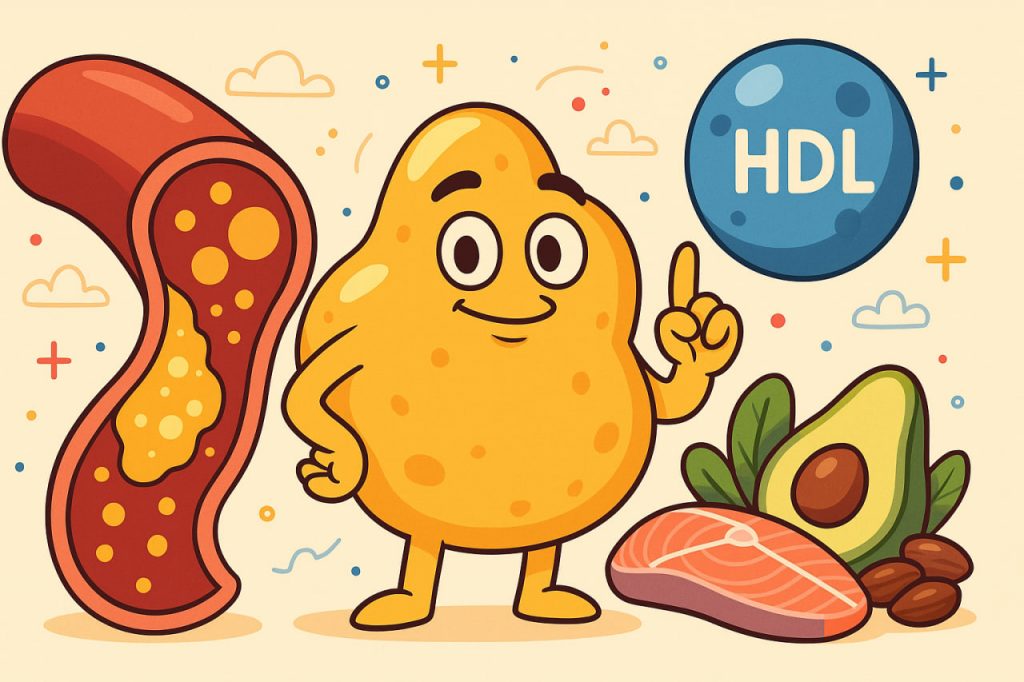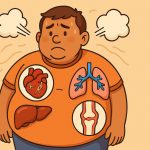Cholesterol is a fatty, wax-like substance that is naturally produced in the liver and also obtained from certain foods. Despite its negative reputation, cholesterol plays essential roles in the human body. It is a building block for cell membranes, helps produce hormones such as estrogen and testosterone, and contributes to the formation of vitamin D and bile acids, which are necessary for digestion. Problems arise when cholesterol levels become imbalanced, leading to health risks.
Types of Cholesterol
There are two main types of cholesterol: low-density lipoprotein (LDL) and high-density lipoprotein (HDL). LDL is often referred to as “bad cholesterol” because it can deposit on the walls of arteries, forming plaques that narrow or block blood flow. HDL, known as “good cholesterol,” helps carry excess cholesterol back to the liver, where it can be broken down and removed from the body. Maintaining the right balance between LDL and HDL is crucial for cardiovascular health.
Why High Cholesterol Is Dangerous
Excess cholesterol, especially LDL, increases the risk of atherosclerosis, a condition where arteries harden and lose flexibility. This can lead to serious complications such as heart attacks, strokes, and peripheral artery disease. High cholesterol often develops silently without clear symptoms, which makes regular medical checkups and blood tests very important. Early detection allows people to take preventive measures before serious damage occurs.
Factors That Influence Cholesterol Levels
Several lifestyle and genetic factors affect cholesterol levels. Diets high in saturated fats and trans fats can raise LDL cholesterol, while healthy fats from nuts, fish, and olive oil may increase HDL. Lack of physical activity, smoking, and obesity also contribute to unfavorable cholesterol levels. Genetics can play a role as well, with some individuals inheriting conditions like familial hypercholesterolemia that cause very high cholesterol.
How to Maintain Healthy Cholesterol
Balancing cholesterol is possible with proper habits. A diet rich in vegetables, fruits, whole grains, and lean proteins supports heart health. Regular physical activity helps raise HDL and lower LDL. Avoiding smoking and moderating alcohol intake also make a difference. In cases where lifestyle adjustments are not enough, medical supervision is required. Self-medication is not advisable—any treatment or supplements should only be used after consulting with a healthcare professional.
The Role of Regular Checkups
Since cholesterol imbalances do not always show obvious signs, periodic blood tests are the only reliable way to monitor levels. Doctors usually recommend lipid profile tests, which measure total cholesterol, LDL, HDL, and triglycerides. Depending on age, family history, and health condition, these tests may be needed once every few years or more often. Preventive healthcare is the key to reducing risks related to cholesterol.
Conclusion
Cholesterol is not inherently harmful; in fact, it is vital for many bodily functions. The danger arises when levels become unbalanced, especially when LDL is too high and HDL is too low. A healthy lifestyle, combined with medical monitoring, helps keep cholesterol within safe limits. Understanding cholesterol and its impact on health allows people to make informed decisions and protect their cardiovascular system.
Glossary
- Cholesterol – a waxy, fat-like substance essential for the body but harmful in excess.
- LDL (Low-Density Lipoprotein) – “bad cholesterol” that can accumulate in arteries.
- HDL (High-Density Lipoprotein) – “good cholesterol” that helps remove excess cholesterol.
- Atherosclerosis – hardening and narrowing of arteries caused by cholesterol buildup.
- Lipid profile – a blood test that measures cholesterol and triglyceride levels.
- Familial hypercholesterolemia – a genetic condition leading to very high cholesterol.
- Triglycerides – a type of fat in the blood that, along with cholesterol, affects heart health.


